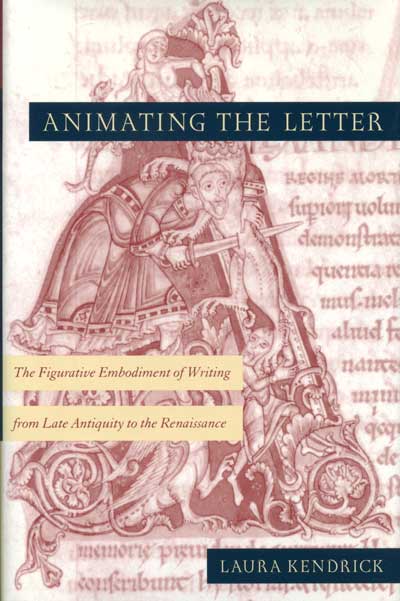|
A Choice Outstanding Academic Title for 2001 Animating the LetterThe Figurative Embodiment of Writing from Late Antiquity to the RenaissanceLaura Kendrick |
Out of Stock | |||
|
|
“I am convinced that Kendrick’s book constitutes a major contribution to several disciplines within medieval studies. . . . This book will set a new standard for the study of how the visual and the literary interact in situ in medieval manuscripts. It would not surprise me if Animating the Letter came to be considered one of the most important books of the decade in medieval studies.” —Laurence de Looze, author of Pseudo-Autobiography in the Fourteenth Century: Juan Ruiz, Guillaume De MacHaut, Jean Froissart, and Geoffrey Chaucer “This book meets one of my most important criteria for success—reading it has changed the way I think about objects I have studied for years. Kendrick’s insights both about ‘decoration’ in early medieval manuscripts and about the representation of authorship throughout the Middle Ages will have a great impact on the way I teach these materials.” —Pamela Sheingorn, translator of The Book of Sainte Foy Animating the Letter explores developments in writing in the Middle Ages. Laura Kendrick’s subject is the ways in which images--the beautifully designed and decorated letters in illuminated manuscripts—empowered writing. In oral cultures it was the living body in action, the living body in the act of remembering, that commanded respect, not inanimate black marks on a piece of animal skin. Eventually, alphabetic writing did replace speaking as the authoritative way of preserving culture and knowledge. But in order for this to happen, writing had to become a repository of living presence and authority. By depicting letters in the act of moving, growing, struggling, the medieval designers of sacred texts presented alphabetic writing as a living force, inspired not by them but by God. In the Book of Kells, for example, we see animal and human bodies turning into or emerging from letters: limbs, eyes, ears, and tongues twist and elongate themselves around letters. Human speaking and movement turn into the letter A or the letter I. The pictorial design of the medieval letter integrated into alphabetic writing the living presence and power of the writer. Kendrick’s clear and accessible writing is enhanced by 107 photographs of medieval manuscripts. Animating the Letter will surely appeal to medievalists, but it will also appeal to anyone interested in the history of writing and the development of the book in Western culture. Laura Kendrick is a professor at the Université de Versailles. She is the author of The Game of Love: Troubadour Word Play. | |||



